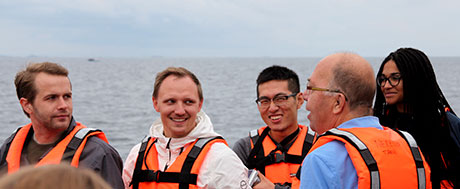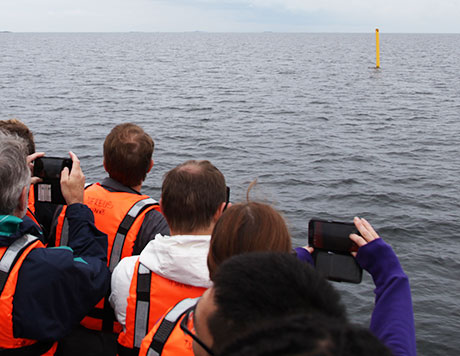
Course leader Lars-Göran Malmberg explains to law students how the historic border was drawn after the 1905 resolution of the union between Sweden and Norway.
The advanced course ”International Law in a Maritime Context” is given by the Department of Law at the School of Business, Economics and Law, University of Gothenburg. Participants on the course are from Sweden, Finland, Germany, France, United Kingdom, Italy and China. The three-day workshop at the Lovén Centre Tjärnö is led by Dr. Robin Cleverly from United Kingdom and Prof. Lars-Göran Malmberg at the University of Gothenburg. The students learn to draw borders in the sea between nations, using the UN Convention on the Law of the Sea and the principles of international law.
– During the 1905 resolution of the union between Sweden and Norway a conflict arose over valuable lobster fishing grounds at Grisbådarna. The countries disagreed about the border, course leader Lars-Göran Malmberg tells. With this ship excursion the students got to see in practice of how the border between two nations was decided in 1909 by the international Permanent Court of Arbitration in The Hague. It was the world's first ever maritime boundary, Lars-Göran Malmberg ends.

Border buoy between Sweden and Norway, whose location was determined in 1909 by the international Permanent Court of Arbitration in The Hague.

